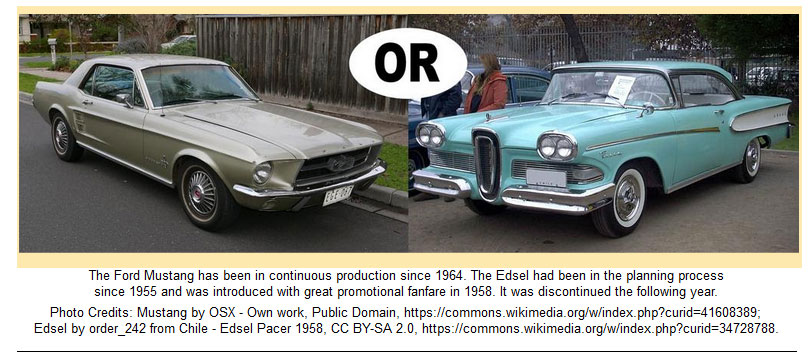3 Steps for Taking Your Company to the Next Level

If you’re reading an article in the CEOWORLD magazine, the chances are high that you’ve already achieved significant success as an executive. But no matter what your track record may be, it does not automatically accelerate you or your company to the next level of performance!
By the 1950s, Ford Motor Company had achieved great things, but its ambitious Edsel project was one of the greatest automotive failures in history. Unlike the company’s successful ventures, the Edsel was a multimillion-dollar disaster in part because no one really had a clear vision for what the car was supposed to be. The company has since proven its ability to achieve great success, like the Mustang, but the Edsel team ignored a vital business principle: velocity.
Executives too often equate velocity in business with speed, adding resources and tasks to a project in order to increase its performance. But speed without direction is only a recipe for burnout. In physics, the true definition of velocity is speed with direction. When applied to business, it also means that every member of the team must be aligned with that direction—each one performing the tasks that support an ideal outcome or objective.
To have that direction, one must have a clear destination—or destiny, if you will. Only then, by starting with the end in sight, will a leader be able to take their company to the next level.
1. Creating Your Destiny
Whenever I consult for C-level executives, I always ask first if they know where they want to go as a company. Often, they’ll say they do but it soon becomes obvious that not everyone is in alignment. The company is divided, and the “cracks” become clear. Some believe in the goal while others do not—even when they say they do. Others disagree on the best way to achieve the goal, and still others are not even clear on what the goal is.
In such situations, I often have my clients do an exercise I call, starting with a clean piece of paper. (It’s not just a metaphor; I actually have them write on a blank sheet of paper.) I ask them to answer a single question:
If you could create your ideal destiny, from scratch, without any regard for what you believe is possible, and not based on past experiences, what would it look like?
The answers to that audacious question bring out a shared passion around which members of the group can rally. It eliminates perceived constraints that would inhibit action, and it inspires tasks that actually support the ideal outcome.
When envisioning an ideal destiny, the participants must set aside past experiences and biases. In my experience working with C-level executives, I’ve found that lack of success stems from focusing on past experience and limitations—from not thinking big enough. If we rely on the past to guide us, then we will only get the same results.
If you have an audacious, “clean piece of paper” destiny in mind, then you can figure out the steps needed to get there. Think of it like flying a plane from Newark to Miami. With the destination in mind, the pilot can work backwards to figure out the key way points of the flight. That way, they know how to make judgments during the flight and know what metrics to watch in order to stay on course. It also helps them predict the potential sources of drag and resistance—such as weather—and be prepared to take steps to counter them.
Finally, a good CEO usually has vision—a strong sense of direction if you will. But to reach the next level, the entire C-suite must feel they are true participants. That’s why the “clean sheet of paper” exercise has to include everyone in leadership. They must all set aside past experiences and buy in to the ideal destiny. From that understanding, the entire team can start asking new questions and come up with surprising new answers.
2. Dealing With Limiting Thoughts
We all tell ourselves stories; it’s human nature. Our inner narrative can help us figure things out, but it can just as easily prevent us from achieving our ideal outcome. Whatever their origin, most of us can recall having thoughts like, “it can’t be done” or “we’re just not strong enough” or “it didn’t happen before so why would it happen now?” These are the very things I tell clients to disregard when doing the “clean piece of paper” exercise, but they still creep in while we’re trying to execute a strategy.
The answer may sound simplistic, but it’s not. You can’t eliminate or suppress those limiting thoughts by sheer force of will. The secret is to recognize limiting thoughts or narratives for what they are—stories we tell ourselves. And when they occur, ask the right questions: “What is the outcome I want, has that changed, and what can I actually do here?”
As I related in greater detail in my book, my daughter’s softball team provides a perfect example. Faced with an intimidating opposing team (and a pitcher with a devastating fastball), their thoughts all tended to be, “Don’t strike out.” I was asked to give an impromptu motivational speech, so I used the classic opener, “If I ask you not to think about pink elephants, what are you thinking about?” Their answer was, “pink elephants.” The mind can’t process the negative. I asked them to think about the desired outcome each time they went to bat (“get a hit”) and to visualize where the hit ball would go. They won the game.
3. Not Having the Answers Up Front
In business, an experienced leader is usually expected to have answers to problems. But if you start with the assumption that all the answers should be known up front, then you will be limited to past experience. Your goals will not be high enough, and your results will be unsatisfactory, to say the least.
When Elon Musk announced plans to send a private citizen around the moon, he did not have all the answers. Neither did President Kennedy in his famous, “We choose to go to the moon” speech in 1962. But both knew they could rely on others—those who bought in to an audacious ideal outcome—to get the answers.
In the 1990s, I worked with a chemical manufacturer in the copper mining industry. They had invented and patented a revolutionary reagent that reduced mining costs by fifty percent but were being undermined, so to speak, by competitors who had reversed-engineered their product and were selling it at next to nothing. My job was to help them prepare a response to the largest U.S. copper mining company’s request for bids.
After I convinced them to drop their goal based on past experience (“win the bid”) and instead create an ideal destiny (a no-bid, three-year contract based on value), they asked me how to do that. I answered, “I have no idea!” They were nonplussed for a moment, but the entire team had bought into the “clean piece of paper” destination. We worked hard to come up with answers and a different set of actions—ultimately succeeding in securing a $200 million contract.
Leaders who hope to take their team to the next level of performance have to become comfortable not having all the answers up front. If they have buy-in from the entire team on their ideal destiny, then they can expect others to engage and come up with answers.
When obstacles arise, as they always do, do not simply react or feel you should have had the answers up front. Instead, remember the ideal outcome and let it turn over in your conscious thought every waking hour. As you think about it, you’ll start asking yourself new questions—ones that don’t center on why something can’t be done. Only then, look for the answers to those new questions. Often, they’ll come from unexpected sources.
The Next Level Is Achievable
It’s not a mystical or unexplainable experience. Knowing the ideal outcome, not letting thoughts limit what we can do, and becoming comfortable with the unknown, are practical steps towards attaining velocity.
Written by Ron Karr.
Bring the best of the CEOWORLD magazine's global journalism to audiences in the United States and around the world. - Add CEOWORLD magazine to your Google News feed.
Follow CEOWORLD magazine headlines on: Google News, LinkedIn, Twitter, and Facebook.
Copyright 2025 The CEOWORLD magazine. All rights reserved. This material (and any extract from it) must not be copied, redistributed or placed on any website, without CEOWORLD magazine' prior written consent. For media queries, please contact: info@ceoworld.biz









